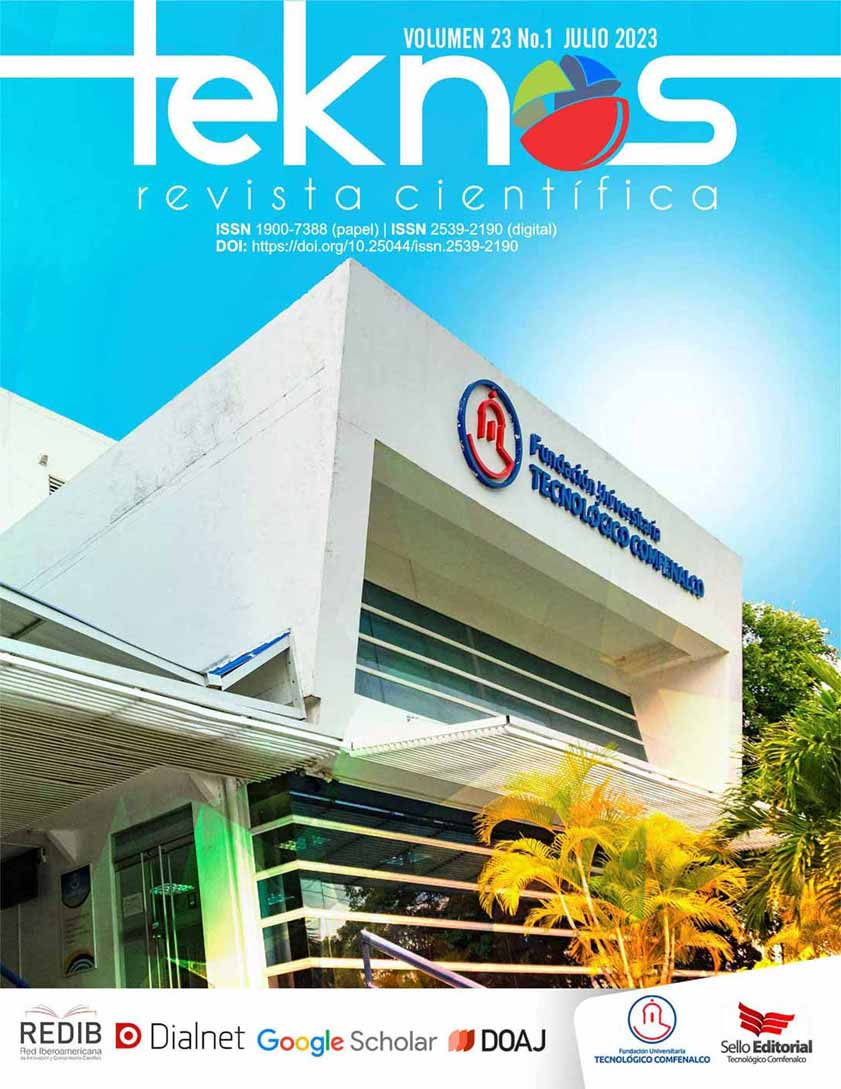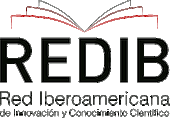Estudio teórico de la proteasa NS3 del virus del dengue e interacción con inhibidores tipo Bowman Birk
DOI:
https://doi.org/10.25044/25392190.1057Palabras clave:
Enzima NS3, virus del dengue, inhibidor de tipo Bowman BirkResumen
Actualmente, el dengue es considerado una de las infecciones víricas que más afecta a las zonas tropicales del mundo y es trasmitido a los humanos por el mosquito Aedes aegypti. El objetivo de este estudio fue evaluar las interacciones entre la proteasa NS3 del virus del dengue y compuestos derivados de flavonoides e inhibidores tipo Bowman Birk. Inicialmente, se evaluaron los modelos 3D de las proteasas NS3 y NS3/NS2B y se optimizaron los compuestos a estudiar, empleando los programas Sybyl 7.3 y Gaussian 03, respectivamente. El acoplamiento molecular se realizó con los paquetes FlexX y EHits 2.0. Se encontró que los compuestos estudiados tenían un patrón lineal entre las constantes de inhibición experimental y teóricas para la enzima NS3. No obstante, este comportamiento no se presentó para la enzima NS3/NSB, por tanto, sería de esperarse que los péptidos miméticos (tipo Bowman Birk) tiene una mayor preferencia por la etapa inicial de la replicación viral. Dentro de los inhibidores con mayor potencial se encontró el péptido mol 18r (tipo Bowman Birk) y el derivado flavonoide panduratin2. Por tanto, este estudio contribuye al diseño o cribado computacional de nuevos inhibidores del virus del dengue utilizando como plantilla la enzima NS3.
Descargas
Referencias bibliográficas
Arias, C. F., Preugschat, F., & Strauss, J. H. (1993). Dengue 2 virus NS2B and NS3 form a stable complex that can cleave NS3 within the helicase domain. Virology, 193(2), 888–899. doi: 10.1006/viro.1993.1198.
Bessaud, M., et al. (2005). Identification and enzymatic characterization of NS2B-NS3 protease of Alkhurma virus, a class-4 flavivirus. Virus Research, 107(1), 57–62. doi: 10.1016/j.virusres.2004.06.015.
Chanprapaph, S., et al. (2005). Competitive inhibition of the dengue virus NS3 serine protease by synthetic peptides representing polyprotein cleavage sites. Biochemical and Biophysical Research Communications, 330(4), 1237–1246. doi: 10.1016/j.bbrc.2005.03.107.
Chappell, K. J., Stoermer, M. J., Fairlie, D. P., & Young, P. R. (2008). West Nile Virus NS2B/NS3 protease as an antiviral target. Current Medicinal Chemistry, 15(27), 2771–2784. doi: 10.2174/092986708786242804.
Droll, D. A., Krishna Murthy, H. M., & Chambers, T. J. (2000). Yellow fever virus NS2B-NS3 protease: charged-to-alanine mutagenesis and deletion analysis define regions important for protease complex formation and function. Virology, 275(2), 335–347. doi: 10.1006/viro.2000.0488.
Erbel, P., et al. (2006). Structural basis for the activation of flaviviral NS3 proteases from dengue and West Nile virus. Nature Structural & Molecular Biology, 13(4), 372–373. doi: 10.1038/nsmb1073.
Gao, M., Waggoner, J. J., Hecht, S. M., & Chen, S. (2019). Selective Detection of Dengue Virus Serotypes Using Tandem Toehold-Mediated Displacement Reactions. ACS Infectious Diseases, 5(11), 1907–1914. doi: 10.1021/acsinfecdis.9b00241.
Gulati, K., & Poluri, K. M. (2016). An Overview of Computational and Experimental Methods for Designing Novel Proteins. Recent Patents on Biotechnology, 10(3), 235–263. doi: 10.2174/1872208310666161013152249.
Gueto, C., Torres, J., & Vivas-Reyes, R. (2009). CoMFA, LeapFrog and blind docking studies on sulfonanilide derivatives acting as selective aromatase expression regulators. European Journal of Medicinal Chemistry, 44(9), 3445-3451.
Gubler, D. J. (1998). Dengue and Dengue Hemorrhagic Fever. Clinical Microbiology Reviews, 11(3), 480–496. doi: 10.1128/CMR.11.3.480.
Korshunova, M., Ginsburg, B., Tropsha, A., & Isayev, O. (2021). OpenChem: A Deep Learning Toolkit for Computational Chemistry and Drug Design. Journal of Chemical Information Modeling, 61(1), 7–13. doi: 10.1021/acs.jcim.0c00971.
Laille, M., Gerald, F., & Debitus, C. (1998). In vitro antiviral activity on dengue virus of marine natural products. Cellular and Molecular Life Sciences, 54(2), 167–170. doi: 10.1007/s000180050138.
Leung, D., et al. (2001). Activity of recombinant dengue 2 virus NS3 protease in the presence of a truncated NS2B co-factor, small peptide substrates, and inhibitors. Journal of Biological Chemistry, 276(49), 45762–45771. doi: 10.1074/jbc.M107360200.
Lescar, J., et al. (2008). Towards the design of antiviral inhibitors against flaviviruses: the case for the multifunctional NS3 protein from Dengue virus as a target. Antiviral Research, 80(2), 94–101. doi: 10.1016/j.antiviral.2008.07.001.
Martina, B. E. E., Koraka, P., & Osterhaus, A. D. M. E. (2009). Dengue virus pathogenesis: an integrated view. Clinical Microbiology Reviews, 22(4), 564–581. doi: 10.1128/CMR.00035-09.
Medina, F., Medina, J. F., Colon, C., Vergne, E., Santiago, G. A., & Muñoz-Jordán, J. L. (2012). Dengue virus: isolation, propagation, quantification, and storage. Current Protocols in Microbiology, Chapter 15, Unit 15D.2. doi: 10.1002/9780471729259.mc15d02s27.
Masyeni, S., Yohan, B., & Sasmono, R. T. (2019). Concurrent infections of dengue virus serotypes in Bali, Indonesia. BMC Research Notes, 12(1), 129. doi: 10.1186/s13104-019-4164-9.
Nall, T. A., et al. (2004). Enzymatic characterization and homology model of a catalytically active recombinant West Nile virus NS3 protease. Journal of Biological Chemistry, 279(47), 48535–48542. doi: 10.1074/jbc.M406810200.
Niu, C., et al. (2020). Differences in the Transmission of Dengue Fever by Different Serotypes of Dengue Virus. Vector-Borne and Zoonotic Diseases, 20(2), 143–150. doi: 10.1089/vbz.2019.2477.
Soo, K.-M., Khalid, B., Ching, S.-M., & Chee, H.-Y. (2016). Meta-Analysis of Dengue Severity during Infection by Different Dengue Virus Serotypes in Primary and Secondary Infections. PLOS ONE, 11(5), e0154760. doi: 10.1371/journal.pone.0154760.
Teixeira, M. D. G., Costa, M. D. C. N., Barreto, M. L., & Mota, E. (2005). Dengue and dengue hemorrhagic fever epidemics in Brazil: what research is needed based on trends, surveillance, and control experiences? Cadernos de Saúde Pública, 21(5), 1307–1315.
Uno, N., & Ross, T. M. (2018). Dengue virus and the host innate immune response. Emerging Microbes & Infections, 7(1), 1–11. doi: 10.1038/s41426-018-0168-0.
Vivas‐Reyes, R., De Proft, F., Biesemans, M., Willem, R., & Geerlings, P. (2003). A DFT Study of Tin‐and Crown‐Ether‐Based Host Molecules Capable of Binding Anions and Cations Simultaneously. European Journal of Inorganic Chemistry, 2003(7), 1315-1324.
Zhou, H., Singh, N. J., & Kim, K. S. (2006). Homology modeling and molecular dynamics study of West Nile virus NS3 protease: a molecular basis for the catalytic activity increased by the NS2B cofactor. Proteins: Structure, Function, and Bioinformatics, 65(3), 692–701. doi: 10.1002/prot.21129.
Descargas
Publicado
Cómo citar
Número
Sección








